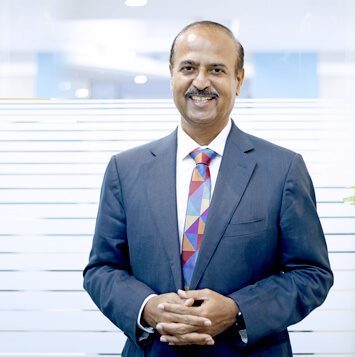Designing Your Health Insurance Cover

You can also listen to this blog belowNew
Last time I spoke to you about the adequacy of sum insured – why you should look at an increased sum insured compared to what you took at the inception of the policy. I’ve talked to a lot of customers and friends, and realised that our understanding of the health policies and products in the market is not across the spectrum. So if we talk about health policy, we are talking about buying a single health policy. We talk of the sum insured and also of increasing it from time to time, but that is not the way it should be looked into. To be fair to the industry, I think the number of health policies being offered, with different kinds of covers, is good. I’d say there’s a huge spectrum of policies out there.
Structuring Your Health Insurance
The issue under discussion today is – how can you design your health cover? What should you look into when you do that? For example, if you have illnesses which are not critical in nature, what is the maximum you are likely to spend on your healthcare? What is the maximum spend that can happen because of diarrhoea, or dengue, or malaria? To my understanding, around Rs.70000-100000. Anything which goes beyond that would be in the vicinity of critical illness, such as a heart attack or cancer or knee replacement or kidney failure.
So why don’t we look at a health guard, of Rs.2 lakh cover? That would be the basic cover we take for normal illnesses. Then we have critical illness covers, which we should take for about Rs.20 lakh. Additionally, we have a hospital cash cover, because the other policies only provide support for the expenses you incur in the hospital. The reality is that when a patient is admitted, there are many things that go beyond the hospital bill for treatment alone. You have visitors coming and other miscellaneous expenses happening. Most insurance companies have this beautiful cover called hospital cash in which per day, a fixed amount of money is given, irrespective of what you spend on hospitalisation, as that is the reimbursement part of regular health insurance policies. Hospital cash is typically there to take care of miscellaneous expenses beyond those incurred in hospitalisation.
Basically, for a comprehensive health cover, you can look at combining health guard, top-up, critical illness and hospital cash at varied sums insured. The entire spectrum of your health needs will be covered and you’ll be surprised to know that for the amount of money you would pay as premium in buying a health guard of Rs.10 lakh rupees, you would probably be able to get a better range of coverage if you opted for a combination of different products instead.
Why You Need a Range of Covers
In times to come, with the way medical sciences are improving on a daily basis, my personal experience says that medical expenses are going to go up like anything. The reason is not because diseases are growing more severe, but because of the sheer sophistication of the treatments which will be coming in and slowly becoming the norm. In light of all this, it’s good to have your policy early. It’s very good to have your health insurance policies in place when you’re fit and fine so that you’re covered for any exigencies that happen later in life. That’s the primary viewpoint one should take when structuring one’s health insurance.
Choosing a Provider
When it comes to a provider, you should look at a provider who:
-
- - has been consistent in the market,
- - is a long-term player,
- - is sustainable,
- - whose balance sheet looks good, and
- - who has dominance in the market in terms of which places it can reach.
Such a provider would be able to:
- - negotiate and get you the best rates from the hospitals,
- - provide you the best of services on a long-term basis.
So just why should we take the designing of our health insurance so seriously? The answer is simple – when you take a health policy you don’t take it for one year. You take a health policy for a lifetime. Companies that match that should be the ones that you prefer. That is my take on designing a health cover.
About the author

Tapan Singhel is the MD & CEO of Bajaj Allianz General Insurance Company Limited. This blog has been initiated by him so that he can directly interact with all the valuable customers and employees of this company.
 Service Chat:
Service Chat: 




VERY GOOD
Very Useful
good